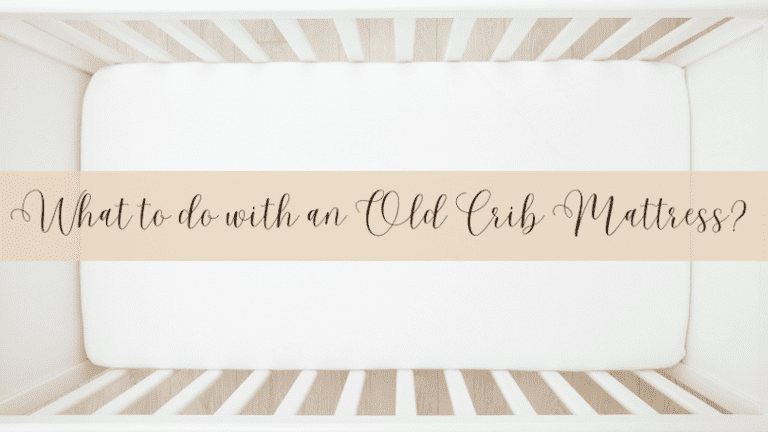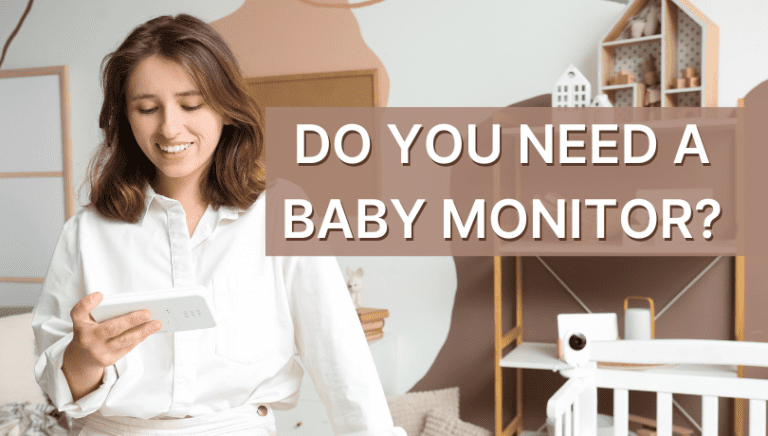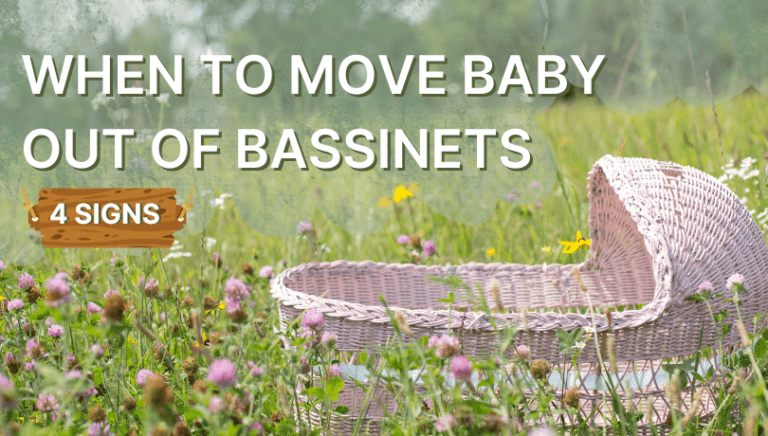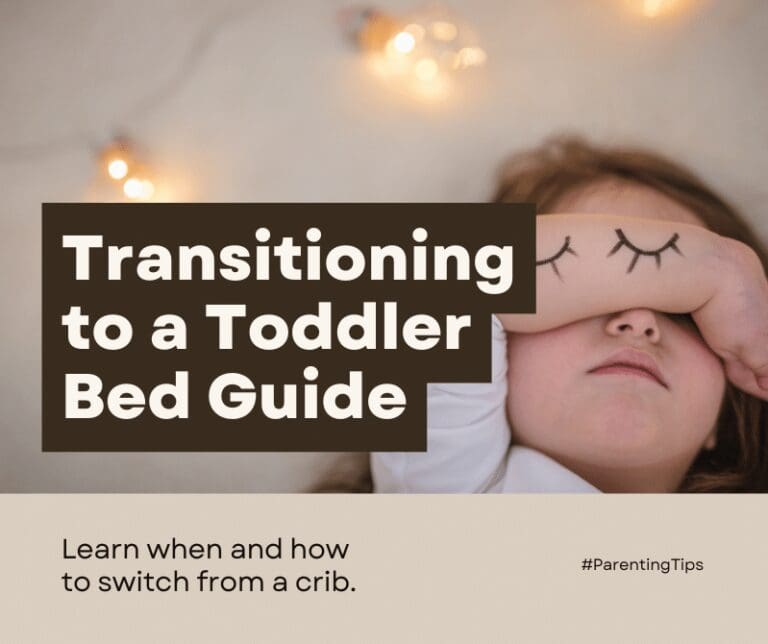Baby Crib Mattress Sizes And Dimensions: A Practical Guide
Hello parents! Are you eyeing a crib mattress to purchase, but aren’t sure of its size yet?
There are hundreds of crib mattress options available and trust me, as a mother myself, I understand that it’s tricky to choose the right one for your baby.
But that perfectly sized mattress is important because ill-fitting crib mattress sizes can harm your baby! And even safety regulations state that a mattress has to fit well.
I’ve bought different types of cribs over the years for all my six children. While most of them were standard cribs, I’ve also tried bassinets and more. And here, I wanted to break down different crib mattress sizes, their dimensions, thickness, and more.
So, follow this guide to find the right crib mattress size, why it’s so important, and tips for choosing the perfect crib mattress for your little one.
Also, if you haven’t selected the crib yet, don’t forget to read my complete guide on how to choose the perfect crib for your little one?
Table of Contents

Crib Mattress Size: Why Is It Important?
You may be intrigued by different crib mattresses that are available today, but are these mattresses even safe for babies?
As you might be, already familiar, the AAP and CPSC urge parents to use appropriately sized crib mattresses to ensure that they fit snugly into the crib.
- This is because there shouldn’t be any gaps between the mattress and crib walls, so there’s no risk of entrapment, suffocation, or SIDS.
- A good-sized mattress also allows babies to roll over more freely, since it provides the adequate space for them to stretch comfortably. This ensures a restful and quality sleep, which does helps with your infant’s physical and mental development.
Kelleigh’s Quick Tip: My Simple Rule for Crib Mattress Gaps
Establish a ½ inch gap between the crib and the mattress to achieve the desired fit you seek for your baby. This precise fit is crucial for safety as well, and adhering to my half-inch gap rule will help you create a safe and comfortable sleeping environment for your baby.
Cribs and Mattress Sizes: What You Should Know?
The mattress and crib both work together to help your baby sleep safely. So, we’ve got to make sure the crib and mattress will fit well with each other.
You may also be wondering if crib mattresses are a standard size in all cases? No, my fellow parents, there are certainly differences. We’ll get into this as well.
If you’ve been browsing online for mattresses, you might have also noticed different styles of cribs.
Today, standard cribs, mini cribs, and bassinets are the most common.
However, you should know that only standard cribs use a standard mattress size and mattress thickness.

Here is an overview of all their sizes so you can get a clearer picture of what I mean:
| Crib Style | Crib Size (width x height) | Mattress Size (width x height) | Mattress Thickness (in inches) |
|---|---|---|---|
| Standard Crib | 28″ x 52⅜” | 27¼” x 51⅝” | Not exceeding 6 inches |
| Mini Crib | 24″ x 38″ (approx.) | 23¼” x 37¼” (approx.) | 5 inches |
| Bassinets | 15″ x 30″ (may vary) | Varies with bassinet size | No more than 1–2 inches |
1. Standard Cribs
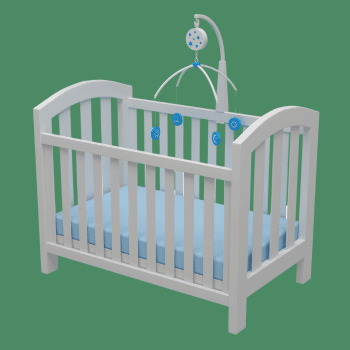
This is a universal size recommended by experts, who give it a thumbs up for its safety and sound sleep for infants.
- It’s also easy to get the right mattress sizes for standard cribs.
- So, if you are looking to make a quick and effective purchase decision, you can make it work with a standard crib.
2. Mini Cribs
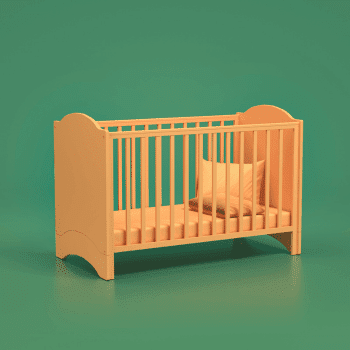
These are shorter in dimensions and great for when you have less space. I had my second baby two years after my first. So, I decided to get a mini crib for my second child, Aiden, and share the room between the two because of these space restrictions.
Since the mini cribs might vary in sizes too, so be extra careful while choosing the mattress for a mini crib. Measure the dimensions carefully and do not let sellers trick you into buying the wrong size.
3. Bassinets
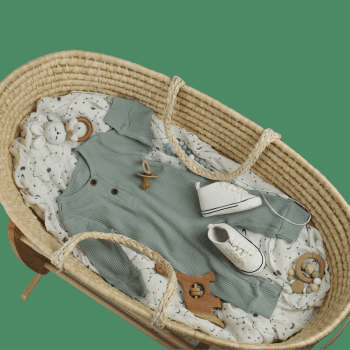
These are smaller than mini-cribs and are best for infants in their early months and only until 4–5 months old.
I used it for Fiona (my third child) because we weren’t completely ready with sleeping space for her, and one of my friends suggested bassinets.
- These are portable, occupy less space, and are great if you recently gave birth and aren’t yet ready with your baby’s nursery.
Apart from the usual baby cribs, there are other options you can consider for special cases, which I have mentioned below.
4. Portable Cribs
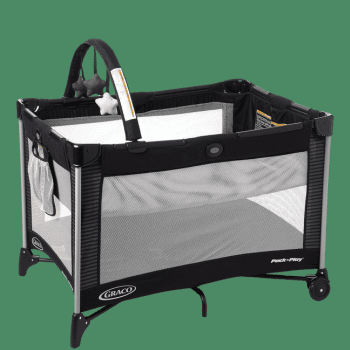
For all traveler parents: having a baby should not be a barrier to your adventures.
- You can have these temporary portable cribs and mattresses that are easy to fold, carry, and use. Make sure you choose a standard size and let your baby enjoy traveling too.
- You can also set these up easily if you’re visiting your parents or in-laws and need a temporary sleeping space for your little one.
Recommended For You: Easy Ways to Travel with an Infant Car Seat and a Stroller
5. 3-In-One Convertible Cribs

These cribs are a one-time investment for all your baby’s needs. Why so?
- These cribs can be converted as your baby grows. You can use it as an infant crib, toddler bed, or even a full-size twin bed.
I’ve been using it for four years for my two kids. Isn’t it worthwhile to achieve quality sleep with a one-time investment?
- You may wonder which mattress size suits these convertible cribs? A standard-size mattress is all you need here, mostly.
- But, you’ll need conversion kits for these cribs. And make sure to buy a new mattress every time you convert to different bed settings.
Recommended Reading: When to transition from a crib to toddler bed?
Kelleigh’s Quick Tip:
You also get these extra fancy cribs and mattresses in different shapes. It comes in oval, hexagon, or circle shapes, and their mattress sizes depend on the crib’s shape.
But, I don’t recommend these options since their mattresses are quite challenging to find, and they do not offer complete safety for infants due to lack or irregular shapes. Also, it is not something that the AAP recommends. If you are still looking to buy one, consult your pediatrician and do your research first, please!

How Thick Should the Crib Mattresses Be?
Parents often neglect this topic, and I have neglected this as well as a new mommy.
- Mattress thickness is as crucial as deciding the right size for a crib. It should not exceed a standard length in the crib to protect the baby from hitting the edges and sides.
- I recommend choosing a mattress less than 6 inches thick for all your mattresses.
Remember, less is more! When your baby reaches 5–6 months of growth, they become mobile and active. So, when you lower the crib mattress height, there should be some space between the crib’s surface and the crib’s edge. There may be a risk of them falling or getting their head stuck if this is not checked properly.
Oh, and I’ve also been asked will a crib mattress fit in a playpen? Well… a playpen is usually larger than a crib. So, a crib’s mattress might be a little too small for that.
Also, it is safer to only use a mattress designed for that playpen rather than try to hack it. You can’t really take risks when it comes to your baby’s safety, can you?
Tips for Choosing The Right Crib Mattress
Hold on! I would love to share my crib mattress tips with parents like you! Here are my self-curated tips for choosing the right crib mattress, keeping safety as a priority.
- Snug Fit Mattresses – As we already talked about, the mattress should fit inside the crib, snug as a bug in a rug! These types of snug fit remove the chances of gaps or holes. You don’t want your baby to get trapped in those gaps.
- Firm Surface – Sleeping on a firm surface is crucial. Please do not take this lightly! A firm surface can support your baby’s bone development and posture, too. Remember Goldilocks and the Three Bears: the bed shouldn’t be too soft or too hard, either. It should be firm and just right. You can also go through my complete guide on how to check the crib mattress firmness.
- Mattresses with Airflow – It also helps to have a baby mattress that lets air flow through it. This can help your little angel breathe better, reduce the mattress from overheating too soon, and provide good ventilation. Now, who wouldn’t want that snug comfort?
- Safe Materials – We have crib mattress safety standards that help us parents understand mattress materials that are safe and what’s not. You can also go the extra mile and choose mattresses made from organic cotton, or crib mattress coils that do not contain vinyl, PVC, or other harmful substances.
- Waterproof – We’ve all been there, in situations where our baby decides to spill their water or milk out of nowhere (or worse). Imagine the cleaning up after that! So, waterproofing helps protect the mattress against accidental spills, reducing the chances of mold or infections. And even if your mattress is waterproof, it’s always a good idea to buy mattress protectors or sheets for an extra layer of protection.
- Durability – Crib mattress don’t expire easily, therefore, go for a high-quality mattress that will last through multiple children and provide comfort and support.
Want to know how to choose the right crib mattresses in detail? My next article on that is in the works! Stay tuned!
Conclusion On Crib Mattress Size And Dimensions
Clearly, the right crib mattress sizes and dimensions help improve your baby’s safety and comfort when they sleep. The correct size, snug fit, and prevention against the risk of Sudden Infant Death Syndrome (SIDS) – make a perfect crib mattress for your baby!
You should opt for standard mattress sizes to be on a safer, yet comfortable side. I’ve also shown you different types of cribs and their suitable mattress sizes like mini cribs, bassinets, and 3-in-one convertible cribs. So, choose wisely according to your needs and lifestyle.
Additionally, remember, firmness and breathability help your baby grow and develop well. So, never miss these factors while making decisions for your baby’s crib sleep environment.
By following these simple tips, you can ensure your little one sleeps soundly and safely, promoting their overall development and well-being.


![How to Measure Baby Shoe Size? [With Printable Shoe Size Chart]](https://www.imperfecthomemaking.com/wp-content/uploads/2025/09/How-to-Measure-Baby-Shoe-Size-With-Printable-Shoe-Size-Chart-768x432.png)
